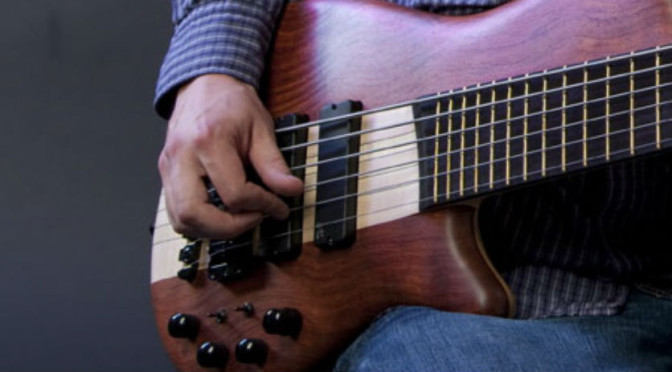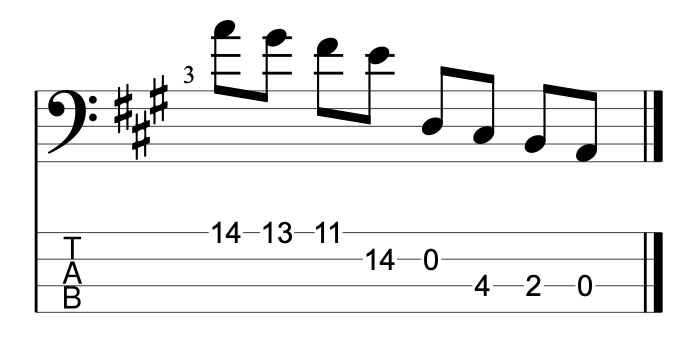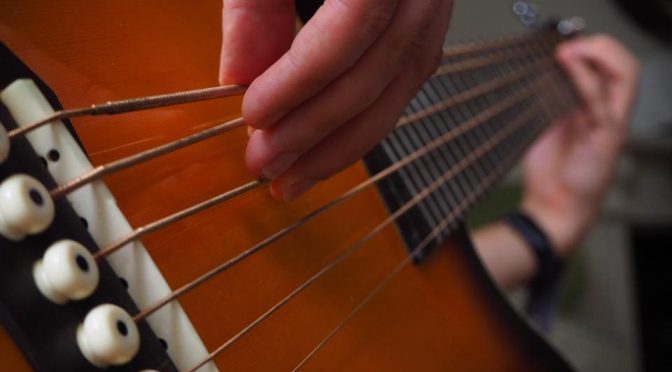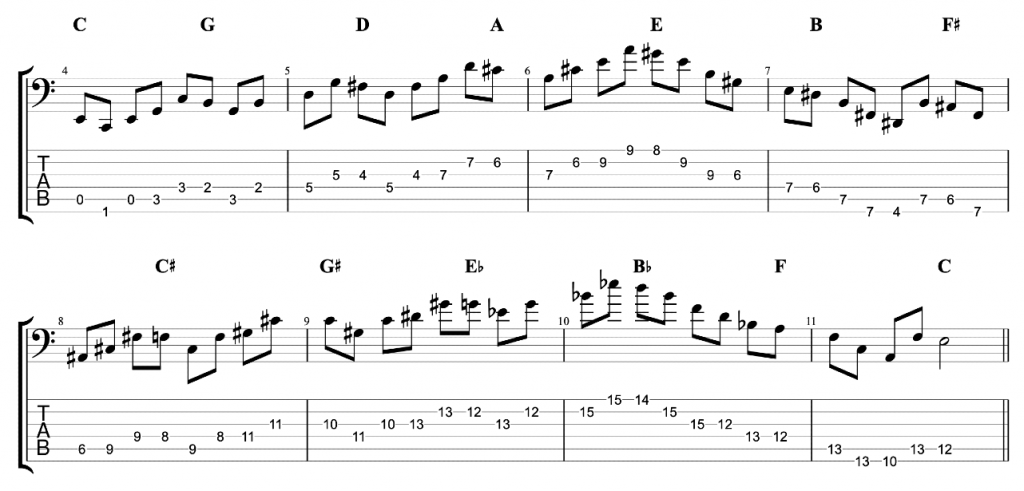6-String Bass Exercise – String Skipping Three Notes Per String – Bass Practice Diary – 4th May 2021
This is one of those exercises that you do when you know a scale well, and you want to find a new way to practice it. There are two techniques I’m practicing here, string skipping and three notes per string. You can use this idea in solos. It will help your scale lines sound less like scales.
Three Notes Per String
The three notes per string idea works really well on 6-string bass. Three notes per string across six strings gives you eighteen notes. So, with a seven note scale like a major scale you can achieve two octaves plus a fourth without shifting positions on the neck. The idea does also work on four strings but you only get twelve notes per position which is a range of less than two octaves.

String Skipping
String skipping or crossing strings, is what I call playing consecutive notes on strings that are not next to each other. So, playing a note on the fourth string and then one on the second string, for example. You need to cross the third string to be able to do it, and it can be awkward at high tempos. There are plenty of other ways to practice that. You could play a scale using 6th intervals for example. But I choose to add this element to my three notes per string exercise, partly because it’s an essential technique to practice, but also because it sounds cool.

If you’d like to see more 6-string bass videos and exercises. I’ve put all of my 6-string bass videos into one playlist on YouTube. You can find it here.











